by Liam S.
I have been struggling with severe itching in my heels for over 30 years. In this article, I will describe my journey to find a solution for this unusual and mysterious problem that no doctor could assist me with.
If you are experiencing the following symptoms, you may be facing the same problem as I did:
- Intense itching in one or both heels, originating from inside the heel rather than on the surface
- No relief from anti-inflammatory, anti-fungal, or anti-itch creams, or only temporary relief
- Persistent symptoms lasting for many years, with occasional periods of relief
- Itching feels like it comes from inside the heel rather than on the surface
- Doesn’t disappear and stays with the patient for 5, 10, 30 years and longer — sometimes rests for years and comes back
- A desire to remove calluses around the heel to get closer to the itch
- The condition often worsens before bedtime or during the night, causing sleep disturbances
- Often appears before sleep or during the night — sometimes causing sleep disorders due to pain or heavy itching
- A sensation of pulsing or heat around the heel, with rubbing against a surface providing temporary relief
If you recognize one or more of these symptoms, you may have Pruritus Calcaneus, a rare but harmless condition that appears to be a bacterial infection that can penetrate deep into the heel bone.
Although it is not contagious and does not pose any serious health risks, it can be a frustrating and persistent problem. In my experience, it is also difficult to diagnose, and I have been misdiagnosed on several occasions. I would like to share some of the common misdiagnoses I encountered during my research.
Possible Misdiagnoses
Deep heel itching can be misdiagnosed as other conditions because dermatologists may not find any inflammation or skin irritations on the surface of the heel. In my experience, I was referred to a neurologist who mistakenly diagnosed nerve damage and linked it to back issues.
However, certain diagnoses such as back pain, sciatic nerve and spine-related problems, plantar fasciitis, athlete’s foot, Tarsal Tunnel Syndrome, bone spur (osteophyte), multiple sclerosis, and neuropathic or chronic itch are likely not associated with deep heel itching.
Below are typical diagnoses that I think are not associated with and are not the source of Deep Heel Itching:
- Pachyonychia Congenita (PC)
Pachyonychia Congenita (PC) is a rare genetic disorder that primarily affects the skin and nails. Individuals with PC often experience thickened toenails, plantar pain, blisters, excessive sweating on the palms and soles, and frequent skin and toenail infections. While PC can cause symptoms such as deep heel itching, this symptom alone is not typically indicative of the PC disorder. - Back Pain
Back pain can be associated with nerve issues on the back, but this is usually not the case with deep heel itching. - Sciatic Nerve and Spine-Health related problems
It is a common mistake to associate deep heel itching with sciatica symptoms, which can include numbness, tingling, burning, and prickling sensations in the legs and feet. Various lower back problems can cause pain that radiates along the sciatic nerve. Typically, sciatica pain is caused when the L5 or S1 nerve root in the lower spine is irritated by a herniated disc. The nerve roots that exit the spine to form the sciatic nerve are highly sensitive, and proteins in the inner portion of the disc that may herniate or extrude can be inflammatory and easily irritate the nerve. - Plantar Fasciitis
Plantar Fasciitis is a condition that involves the band connecting the heel bone to the toes. In my opinion, it is not related to patients experiencing itching problems on their heel or heels. - Athlete’s Foot
Tinea pedis, a fungal infection, rarely affects the heel. Patients experiencing deep heel itching often do not exhibit any indications of such an infection, and administering antifungal medication fails to alleviate the symptoms. - Tarsal Tunnel Syndrome
It is commonly mistaken that Tarsal Tunnel Syndrome (TTS) and Carpal Tunnel Syndrome are related to Deep Heel Itching.Especially TTS (also known as posterior tibial neuralgia) since it’s foot related. - Bone Spur (Osteophyte)
While osteophyte, the formation of bone, can lead to various complications, the symptoms described above are seldom associated with it. - Multiple Sclerosis
Although Multiple Sclerosis (MS) is a daunting diagnosis,and luckily deep heel itching is not linked to this condition. - Neuropathic or Chronic Itch
As many patients experience identical symptoms in the same precise location, it is improbable that the source of the problem stems from a chronic itch caused by the malfunctioning of itch-sending neurons leading to a sensory hallucination of pruritogenic stimuli.
Possible Diagnosis
Based on my research, it is conceivable that deep heel itching is caused by a bacterial infection, specifically a strain of Actinomyces. Diagnosing this condition can be challenging, as the bacteria may reside in the callus of the heel, making it difficult to identify. Physicians may be hesitant to associate deep heel itching with this type of bacterial infection, as Actinomyces is typically associated with ENT and gastrointestinal problems.
Actinomyces species are anaerobic bacteria that can thrive deep within body tissues, including the callus and skin on the heel where oxygen levels are low. In cases of deep heel itching, the bacteria initially settles on the callus and then works its way to the skin. Once established, the infection can spread to other parts of the foot, with the heel and dry skin providing an ideal environment for the bacteria to persist for many years. Aside from severe itching and occasional pain, the infection appears to be harmless.
Treatment
Due to the resilience of Pruritus Calcaneus to short-term antibiotic treatments, antibiotics are not recommended, as they are unlikely to penetrate the callus, which is composed of dead skin. A recent 2016 study examined the resistance patterns of Actinomyces species, as previous research provided limited information regarding the antimicrobial resistance of these bacteria. However, antibiotic treatments are typically reserved for severe infections with Actinomyces, such as those affecting the intestines, face, and mouth. Treating Pruritus Calcaneus with antibiotics therefore seems unnecessary, as it exposes the individual to the side effects of a long-term antibiotic regimen for a benign yet bothersome itching sensation.
After my research, I have discovered that Melaleuca Alternifolia may be a viable solution to treat the identified Actinomyces. Interestingly, Actinomyces is classified as a tropical bacterium and has been mistaken for a fungus due to its similar behavior and effect on the human body. I found a close association between Melaleuca Alternifolia and Actinomyces, particularly in tropical regions such as Australia, where indigenous people have used it for centuries to treat various diseases. Melaleuca Alternifolia is renowned for its potent antimicrobial properties, composed of terpene hydrocarbons, sesquiterpenes, and alcohols, which are capable of penetrating the layers of the skin.
The following treatment helped me to get rid of the deep heel itching:
I used this Callus Remover on the heel to get closer to the source of the bacteria as I had identified for myself through years of self-diagnosis and research.
Melaleuca Alternifolia (known as Tea Tree Oil or TTO) can be applied 2 hours before sleep time around the itching area. It is very important to get rid of the dead skin first thoroughly. The callus is often the cause of the infection and needs to be removed on continuous basis. That will prevent the bacteria from multiplying back.
You can buy the callus remover from sunmark. Even though Amazon has some similar looking ones, I recommend the sunmark brand shown right as they are very sharp. If you live in the United States, some CVS and Rite Aid stores have them as well.
If you live in Germany, the recommended brand is Credo — their blades are made in Solingen.
However, I later discovered that the heel cups would dissolve when they came into contact with the TTO. As a result, I switched to Heel Huggers, which proved to be more effective. The product listed below was particularly promising:
As previously mentioned, Amazon offers silicone heel cups, but these are susceptible to TTO corrosion, as it is a potent substance that can penetrate the silicon. Instead, I recommend opting for neoprene-based Heel Huggers, as they are designed to retain the TTO and facilitate its penetration into the skin. Some individuals have used socks to contain the TTO, but I find that the fabric of the sock tends to soak up the TTO oil.
What It Does
The Heel Hugger serves to conserve the TTO on the surface of the heel and assists in penetrating the skin. Upon contact with the infected area, TTO appears to gradually eliminate Actinomyces over the course of several weeks, as these bacteria are highly susceptible to Monoterpenes, a key ingredient found in TTO. I continued this treatment for 6 weeks, even after experiencing relief within a few days. In my case, symptoms such as pain, heat, and itching in the affected heel had dissipated within days.
As I said, Amazon sells the silicon heel cups, but the tea tree oil is corrosive and will penetrate the silicon. The neoprene based Heel Huggers that keep the tree tea oil inside. I have also read that some people simply use socks. However, socks might not have the same effect as the fabric will in my opinion suck the TTO.
When selecting Tea Tree Oil, it is imperative to ensure that it contains a high concentration of monoterpenes and alcohol. Not all brands of Tea Tree Oil provide these beneficial compounds, such as those found in Walmart or CVS, which may be less effective due to low progesterone concentrations. To effectively eliminate the cause of deep heel itching, a high concentration of progesterone is necessary. I have personally achieved positive results with the recommended product above.
Itching is gone? Keep it that way!
If the itching has subsided, it is crucial to maintain these improvements by addressing the root cause of the issue, which I believe to be the presence of calluses and dry feet. I make a concerted effort to frequently remove any calluses and consistently apply potent foot creams to prevent future occurrences. In the event that the itching sensation returns, I immediately reapply TTO to address the issue.
Lastly, I would like to express my gratitude towards those who have provided helpful comments, which have allowed me to refine and improve my healing methodology over the past several years.





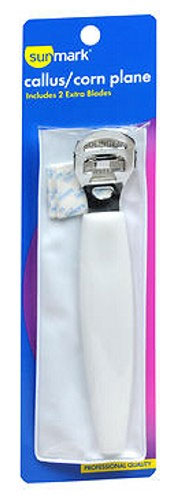
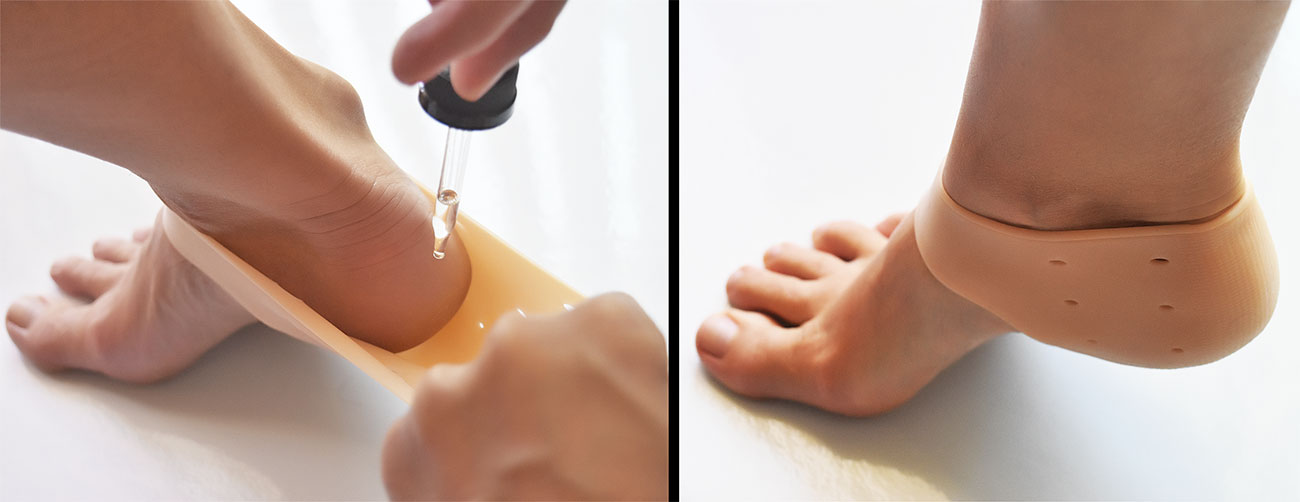
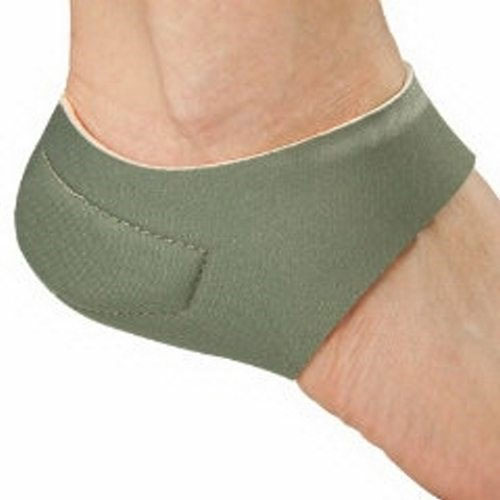
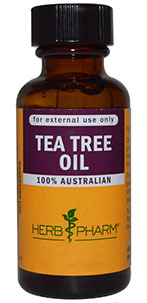
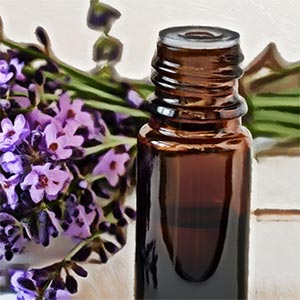
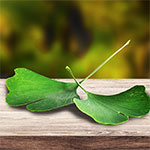

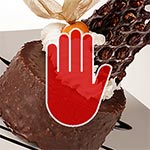
I just tried this method and got immediate relief for an itch I’ve had for years!!! I had the callous scraper, heel cup and tea tree oil in my house so I was able to implement your plan when I read it. I put the oil on a band aid and then put the heel cup over the band aid. I’m not kidding when I say I hit immediate relief. thank you!
I have been dealing with this issue for years. I have never looked into it further after a primary care doc told me about 20 years ago that it’s a varicose vein. However, over the last couple of years it’s spread, is deeper, and is now unbearable. And, yes, it worsens during the night and keeps me from sleeping! This is the first article I found when searching for “stop chronic deep heel itch.” I thought I was the only one!! I am going to try this as soon as I get the huggers. I’m an herbalist, so I always have Tea Tree Oil on hand. God, I love the internet, LOL. Well, sometimes.
This article is heaven sent!!!!! Thank you!!!!
I used the tree oil and did all of that but it didn’t help. Tbh, this seems to be a scam! HERE IS WHAT WORKED FOR ME:
I noticed that the itchiness comes when I eat chia seeds everyday. I stopped consuming chia seeds and the itchiness is gone. I strongly believe it’s something in your diet, if it is not chia seeds, try too find out what it is before rushing to buy the products in this article. Hope this helps!
Great article – Ive never felt it bad enough to go to a Dr and I think they wouldn’t have a clue to be honest and mis diagnose . but itch so annoying and yes like someone else said the doormat has been my go to for years along with scraping with the callous remover- will definitely try the tea tree oil and heel cups and keep fingers crossed- thanks so much
I am so glad I found this article. I was on the path to using anti fungals. I ended up creating 2 concoctions. 1. I added about 5 drops of tea tree oil to about a tablespoon of Cerave healing ointment. I will put that on at night. And 2. Using a small blue glass bottle I added half with distilled water, half with rubbing alcohol and 20 drops of tea tree oil. I will use that after showers and throughout the day, especially when it is itchy. So far I feel it has helped.
For a few years now I have had this odd issue of pain after taking a long walk or jog. I thought it was neuropathy. But, why? I don’t have diabetes or any other issue that would cause it. Now, I believe it to be this. Thank you for helping me from feeling I was crazy.
Wow, thank yo uso much for sharing. I haven’t been able to find anything about this for years! Excited to try this!
Thank you .I am having this problem .didn’t know whats wrong with my feet …thank you for sharing .
Fascinating!!!! I have been trying to figure this itch out now for a while. This makes complete sense, at least to me. I just wish there were more answers. After many years of trying to figure out what is causing me crazy scalp pain, itch and alopecia on my right side only, a couple of cultures done last year indicated actinomycetes. The Derm was clueless and in fact fired me. Now this itch that has non stop continued for some time also right sided sounds like they may correlate. Would love to connect.
Thank you for writing this! I was baffled. I will follow your treatment advice.
Again, thank you!
Clearing the callus more aggressively made mine worse, it seemed to activate and spread the infection. But I found using the tea tree oil with the heel cups and Saran Wrap ( so the tea tree oil goes on the Saran Wrap and the heel protector holds it in place) worked anyway as the tea tree oil seems to penetrate fairly deep. For me keeping the tea tree oil on for a long time (1-3 hours 1 or 2x /day) was key. I do regularly clear out the callus but am finding I need to leave some callus on to stop the itch.
I had found perhaps a previous version of this site years ago and used the tea tree oil and it worked quickly! But it came back as I was lazy about it. I did also discover during that time that you can use tea tree oil to exfoliate the callus as the skin will scrub off a few min after applying the oil to the heel after a shower. Really thankful for this info!
Thank you very much for your article. I started having this after running a bearfoot marathon on the island where I live. I am grateful for explaining my exact symptoms and proposing a natural independent method of curing it. Like many other people I have lost my trust to the western type medicine and its health and sickness approach. I have so often been misdiagnosed and had to find answers and cures myself usually through changing radically my habbits to more natural lifestyle ones. Thank you again!
Thanks for your article.
Oh.my.gawd. Thank you thank you thank you for writing this article!!! I’m 55 and have been dealing with this for 10 years now. I have to use a metal back scratcher to get any form of relief and have used every antibiotic and antifungal cream known to man with zero relief. I will be purchasing everything you suggested and starting treatment immediately! I can’t thank you enough.
Vee, I too have to use a metal back scratcher cause nothing else reaches this incredible itch! I’ve been dealing with mine for over 20 years! I’m excited to try tea tree oil to see if it works. Best of luck to you and I wish our unique itch issues.
Omg. Been googling “deep heel itching” for years and finally found this. Never quite knew how to describe the itch since it’s so unique and specific to microscopic areas on my heel. It’s like 5 different one centimeter areas but they’re all INSANELY itchy from the inside. I’m 22 and remember experiencing this as young as 10. I’ve always had the urge to scrape the skin away, so it’s satisfying to know that’s actually part of the treatment. Why isn’t this more known? You can’t even find anything by googling “pruritus calcaneus”. It’s just so specific
This is my exact symptoms to a t!
Me too !
Thank you for writing this article. You describe EXACTLY what I feel. I’m going to follow your advice and use a sharp scraper. Currently, I’m scratching my foot on the coir doormat. Thanks, again.
I am going to be 55 next month and I have never experienced anything like this before. Mine started a couple of weeks ago and I have been in pain and having trouble walking sometimes. I just went to my supervisor and asked him for some sandpaper because I am at work and the itching got so bad. The sandpaper worked and I remembered that my boss has TTO in his office! I put that on my feet and I can’t wait to see how it works. I have tried everything else that I can think of. Thank you for this article.
I’m somewhat young and I had this problem start about 1 year ago (when I turned 28). Mine I think is a very unique case. I was born in Australia and spent the first 18 years of my life there barefoot almost 100% of the time where I never had the problem. Then I moved to Scandinavia and due to my desire to remain barefoot as much as possible (for comfort) I use knitted woollen socks quite often for warmth. Though in the warmer months I don’t wear socks really at all but still remain totally barefoot.
I’ve had cases of athletes foot quite often. Yet at my age no real callus. My feet are still very soft. A basic foot skin gauze/scourer like a piece of stronger spongey sandpaper didn’t work, or maybe it even caused the problem. As I bought one recently to take off some of the callus I started to develop on just my right toe and side of my right foot.
When I first experienced this itching 1 year ago, I got a blood test. The first time the itching was in the centre of my right foot, in the middle of the soft arch and down towards the centre of the heel. I also threw away a pair of Aussie sandals (thongs) which I suspected might have been a breeding ground for bacteria.
Interestingly I was diagnosed with incredibly severe anemia (no ferritin or iron stocks) and vitamin D deficiency. I was also diagnosed with very low zinc. This was due to a bad vegan diet that I had followed for 4 years. I cut the diet completely, ate a more balanced diet and supplemented with vitamin D, iron and zinc pills. I saw improvements in a whole host of other areas of my life (sleeping, restlessness, concentration and irritability). The itching stopped too. My doctor said the itching was likely due to nerve issues caused by low zinc and iron. Actually if you Google it, itchy feet is a common symptom.
The thing is, I’m now experiencing the itchiness whilst on the supplements. I’ve had good iron stocks, vitamin D and zinc for almost 1 year now. Yet deep inside my right heel, it’s itching like crazy and waking me up at night. I don’t think I’ve ever suffered it in my left.
Like another commentor I recently started exercising (callisthenics) 3 weeks ago and using a cork yoga mat. I’ve also used a callus gauze/scraper but it’s like a sandpaper sponge not a scalpel. It doesn’t take much off the skin at all.
I’ll try and find a proper scraper. In Australia we use tea tree oil for everything. I think unlike most essential oils and other nonsense it is somewhat of a literal miracle cure. It’s a natural disinfectant and pain reliever. There’s a reason why it’s so popular and grown so commonly in Australia.
Anyway. I hate this feeling. I’m going to try and get to the bottom of it. Buy a proper scraper and see if some general TTO will help (I haven’t used TTO for anything for years). If this doesn’t help, I’ll up my zinc dosage and try to wear socks less often.
OMG it worked ! 10 years and it seems to be going away after 6 days , actually the night after I removed the calluses . I used a cheese grater type callus remover . No heel cups I just rubbed the TTO on with my fingers and wore socks . Thank you so much !
Very useful information and my symptoms exactly! Pot on, many thanks.
These are my exact symptoms. Recurred after not having it for over a decade, and triggered by exercise. I’ve tried the treatment as advised above, one foot cleared up after a week, the other just seemed to get worse. Out of desperation I tried an anti-histamine (cetrizine hydrochloride one-a-day) and this has worked wonders. Such a relief.